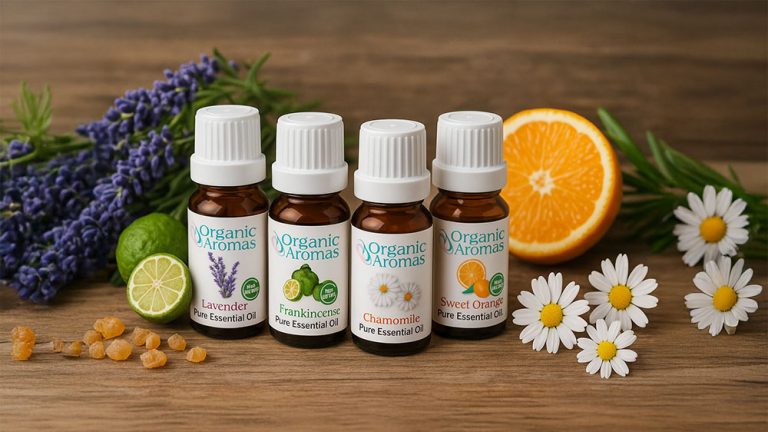7 Types of Carrier Oils for Essential Oils Bliss
Have you ever noticed how one oil blend melts into skin in seconds while another leaves a slick film? The carrier oil (the base that carries your essential oil) you pick makes all the difference. It’s all in the base.
At Organic Aromas we love watching how these oils transform a simple mix into a skin-soothing ritual. Here are three favorites we’re excited to share:
• Jojoba seed oil for a feather-light mist
• Avocado oil for a moisture lock
• Sweet almond oil for a vitamin-rich boost
Next, we’ll explore seven carrier oils to match every skin need and lift your at-home aroma experience. Ready to find your perfect pairing?
Fundamentals of Carrier Oils for Diluting Essential Oils

Carrier oils are cold-pressed (oil squeezed without heat to keep natural nutrients) liquids from nuts, seeds or vegetables. Carrier oil (base oil used to blend potent plant extracts) makes strong essential oils gentle on your skin. At Organic Aromas we choose oils from jojoba seeds, olives and sweet almonds. They bring a pure, nourishing touch to every blend, aroma product or body oil you make.
These oils help spread tiny oil molecules evenly when you apply it to your skin. They lower the chance of irritation and boost absorption. So when you mix a few drops of essential oil into a carrier oil, your skin drinks it in without fuss.
Most carrier oils look light and smell neutral. They’re rich in fatty acids, nutrients and vitamins, nice extras for your skin. Their quiet scent won’t compete with your favorite aromas during massage or facial time.
Here’s the thing. Carrier oils slow down evaporation. That means you get more time with soothing plant compounds. We often suggest a 2 percent dilution for healthy adults. Check our essential oil dilution chart for more tips. Or use the essential oil dilution calculator to blend safely every time.
Next, match your skin type with the right carrier oil:
| Skin Type | Carrier Oil | Why It Works |
|---|---|---|
| Oily or combination | Grapeseed | Light texture, non-greasy feel |
| Normal or dry | Fractionated coconut | Silky feel, smooth absorption |
| Dry or mature | Avocado | Thicker, locks in moisture |
| All skin types | Sweet almond | Soothing and vitamin-rich |
In truth, the right carrier oil is the unsung hero of any blend. It nourishes your skin barrier and lets your chosen aromas shine.
But um, have you skimmed our safety guide?
- Store oils in a cool, dark spot (you can even consider storing them in the fridge).
- Keep blends away from kids and pets.
It’s part of our promise to ethical sourcing and organic purity.
7 types of carrier oils for essential oils Bliss
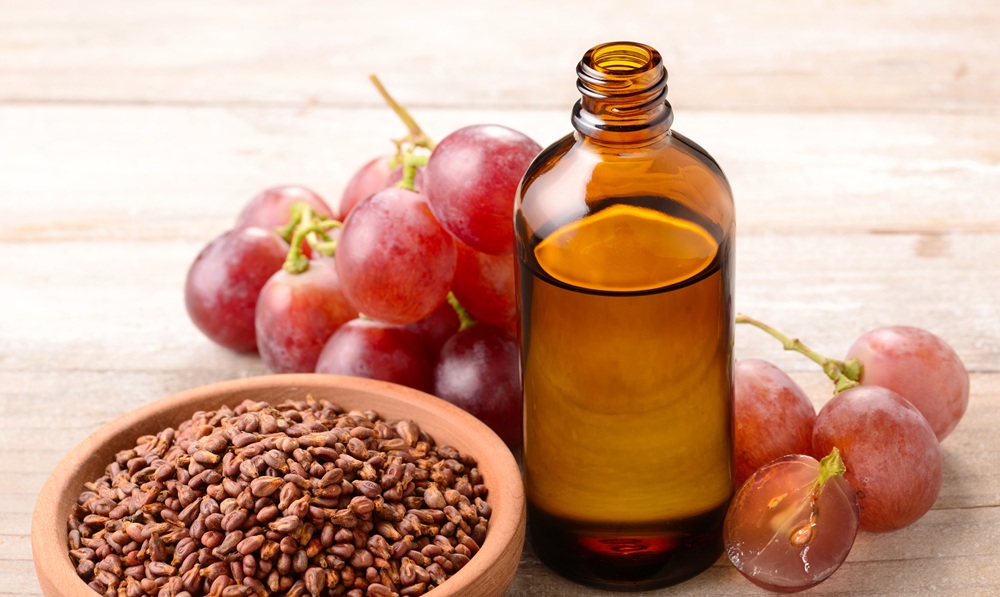
Here’s a quick guide to seven carrier oils (the base oils you mix with essential oils) that add their own aroma, slip, and skin perks to your daily routine! Use this chart to match each oil’s slip and how fast it sinks in (absorption rate) with your skin’s needs. Which one will you try?
| Oil Name | Key Benefits | Absorption Rate | Shelf Life |
|---|---|---|---|
| Jojoba oil | Mimics sebum (your skin’s natural oil), fights bacteria, calms redness | Fast | Up to 5 years |
| Sweet almond oil | Rich in vitamin B7, deeply moisturizes, gentle on sensitive skin | Medium | About 1 year |
| Fractionated coconut oil | Stable at room temp, lauric acid (skin-soothing fat), eases eczema | Fast | Indefinite at room temperature |
| Grapeseed oil | Hypoallergenic (less likely to irritate), non-greasy, helps fight acne | Fast | 1–2 years |
| Olive oil | High in oleic acid (moisture-binding fat), fruity aroma, fights dandruff | Slow | 12–18 months |
| Argan oil | Packed with antioxidants, boosts elasticity, eases aging signs | Medium | About 3 years |
| Avocado oil | Loaded with omega-3 & 6 (skin-loving fats), vitamins A & E, soothes inflammation | Slow | About 8 months |
Jojoba oil melts into your skin fast and feels almost like your own natural oils. Fractionated coconut oil feels weightless. It’s perfect for a quick morning blend or a bedtime wind-down.
If you want a richer slip to lock in extra moisture, avocado or olive oil will do the trick. And um, when you need gentle, nutrient-packed care, sweet almond or grapeseed oil has your back.

Sign Up to Get Your FREE
e-Book Here…
Next, check how fast an oil sinks in and how long it stays fresh. A fast-absorbing oil like jojoba lets your skin breathe. Oils with long shelf lives keep your blends fresh month after month. Tip: store your oils in a cool, dark place to protect their pure goodness.
Key Criteria for Choosing the Right Carrier Oil
When you’re picking a carrier oil, you want it to be pure and kind to your skin. Certified organic seals mean it’s grown without synthetic chemicals. Next, think about extraction, cold-pressed (squeezed at low heat) keeps more of the oil’s natural goodness. And have you looked at the comedogenic rating (how likely it is to clog pores)? That number can guide you to the right match.

Think about how quickly the oil sinks in. Fast-absorbing oils feel light, almost like a mist that vanishes into your skin. Medium and slow-absorbing oils give you extra glide and lasting moisture, perfect for that silky, hydrated feeling. Finally, consider the fatty-acid balance (the mix of fats that work with your skin) for extra nourishment.
Here’s a quick look at popular carrier oils and what they offer:
| Oil | Extraction | Absorption Rate | Organic Certification |
|---|---|---|---|
| Jojoba | Cold-pressed (squeezed at low heat) | Medium-fast | USDA Organic |
| Sweet Almond | Cold-pressed (squeezed at low heat) | Fast | USDA Organic |
| Apricot Kernel | Cold-pressed (squeezed at low heat) | Fast | USDA Organic |
| Argan | Cold-pressed (squeezed at low heat) | Medium | EU Organic |
| Grapeseed | Cold-pressed (squeezed at low heat) | Fast | USDA Organic |
| Coconut (Fractionated) | Steam-distilled (gentle heat) | Fast | USDA Organic |
| Rosehip | Cold-pressed (squeezed at low heat) | Slow | USDA Organic |
Next, match your skin type to the right oils. Dry skin drinks up rich oils like argan and rosehip. Oily skin does best with lighter oils like grapeseed or jojoba. Sensitive skin stays calm with jojoba or fractionated coconut. Mature skin blossoms with rosehip or argan for extra support.
| Skin Type | Recommended Oils | Comedogenic Rating |
|---|---|---|
| Dry | Argan, Rosehip, Sweet Almond | Argan 0, Rosehip 1, Sweet Almond 2 |
| Oily | Grapeseed, Jojoba | Grapeseed 1, Jojoba 2 |
| Sensitive | Jojoba, Coconut (Fractionated) | Jojoba 2, Coconut 0 |
| Mature | Rosehip, Argan | Rosehip 1, Argan 0 |
A simple swap can bring back your skin’s natural calm and glow. Breathe. Apply. Enjoy.
Proper Storage to Extend Carrier Oil Shelf Life
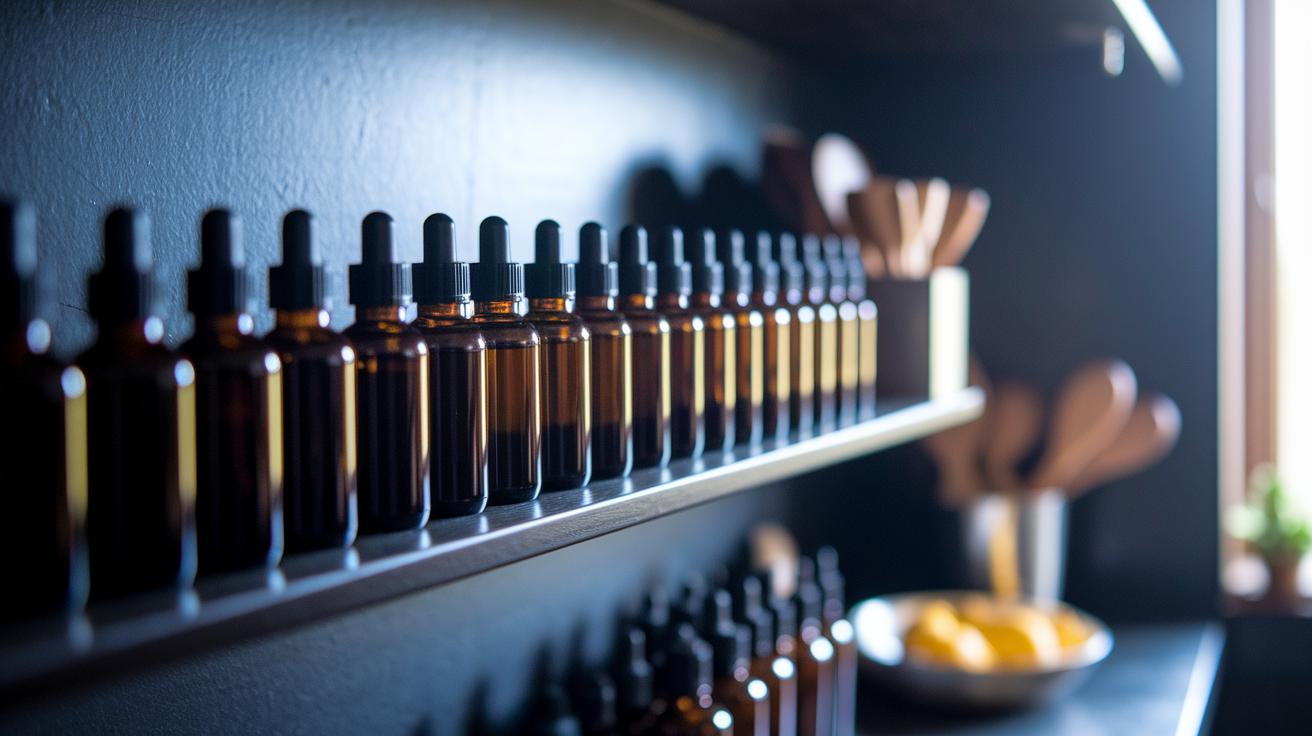
We love how carrier oils add a smooth, nourishing feel to our daily routine. But they need a little care to stay fresh. Most stay bright and fragrant for up to two years. But oils like rosehip oil (made from tiny rose seeds) or evening primrose oil (rich in fatty acids) need to rest in the fridge.
Avocado oil may thicken in the cold. Let it sit on the counter until it flows again. In truth, a cool, dark spot is your oils’ best friend.
Here’s how to keep your oils happy:
• Use dark glass bottles, they block light that speeds rancidity.
• Store in a cool, dark cabinet or drawer to shield oils from heat and sun.
• Minimize oxygen by refilling smaller bottles and topping off after each use.
• Keep caps tight to seal out air and moisture.
• Refrigerate only rosehip and evening primrose oils. Avocado oil can change texture when too cold.
Next, add a drop of vitamin E (an antioxidant that shields against oxidation). Aim for about one percent of the bottle. It’s a tiny trick that slows rancidity, especially in seed oils.
Breathe in your oils, then give them a quick sniff before each blend. If you catch a sour or paint-like scent, it’s time for a fresh bottle. That way every moment feels as pure and soothing as the first.
Safe Dilution Practices with Carrier Oils
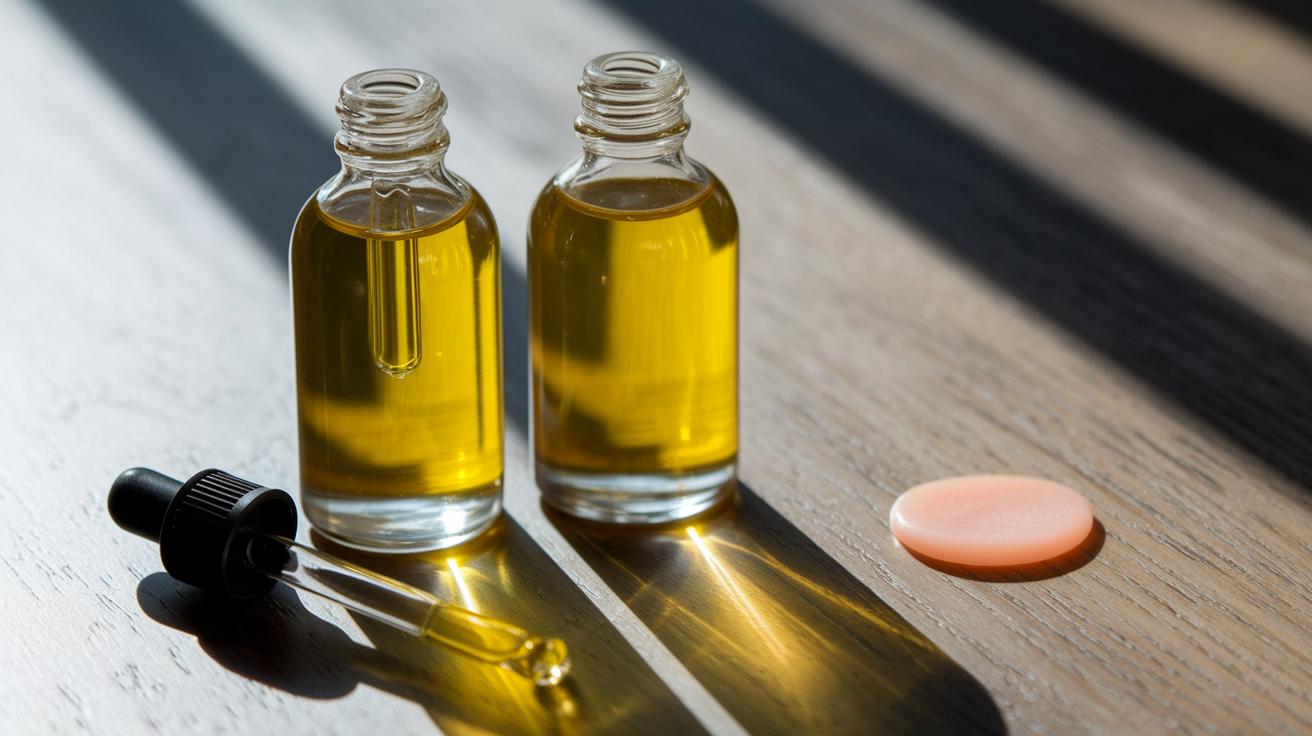
Mixing essential oils (powerful plant extracts) with carrier oils (neutral oils that carry the scent) feels like a little ritual. But the right ratio matters. It keeps your skin calm and happy.
For most healthy adults, a 2% mix is ideal – about 10 drops of essential oil per ounce of carrier oil. If you have sensitive skin, a child in the house, or you’re older, 1% works best – around 5 drops per ounce.
Here’s how to make a gentle, skin-safe blend:
- Pick a clean glass or PET bottle.
- Add your carrier oil first.
- Count in the essential oil drops.
- Close the lid and roll or swirl gently. No shaking.
- Label the bottle with the blend name, date, and ratio.
- Test a tiny amount on your inner forearm.
- Wait 24 hours without washing.
Spot redness, itching, or a rash? Wash the area with mild soap and water. Stop using the blend. Wait, let me rephrase that. If irritation sticks around, talk with a skin-care pro.
Store blends in a cool, dark place away from kids and pets. That way each drop stays fresh and full of plant goodness. And you’ll enjoy every soothing mist or massage without worry.
Specialty and Herb-Infused Carrier Oils Explained
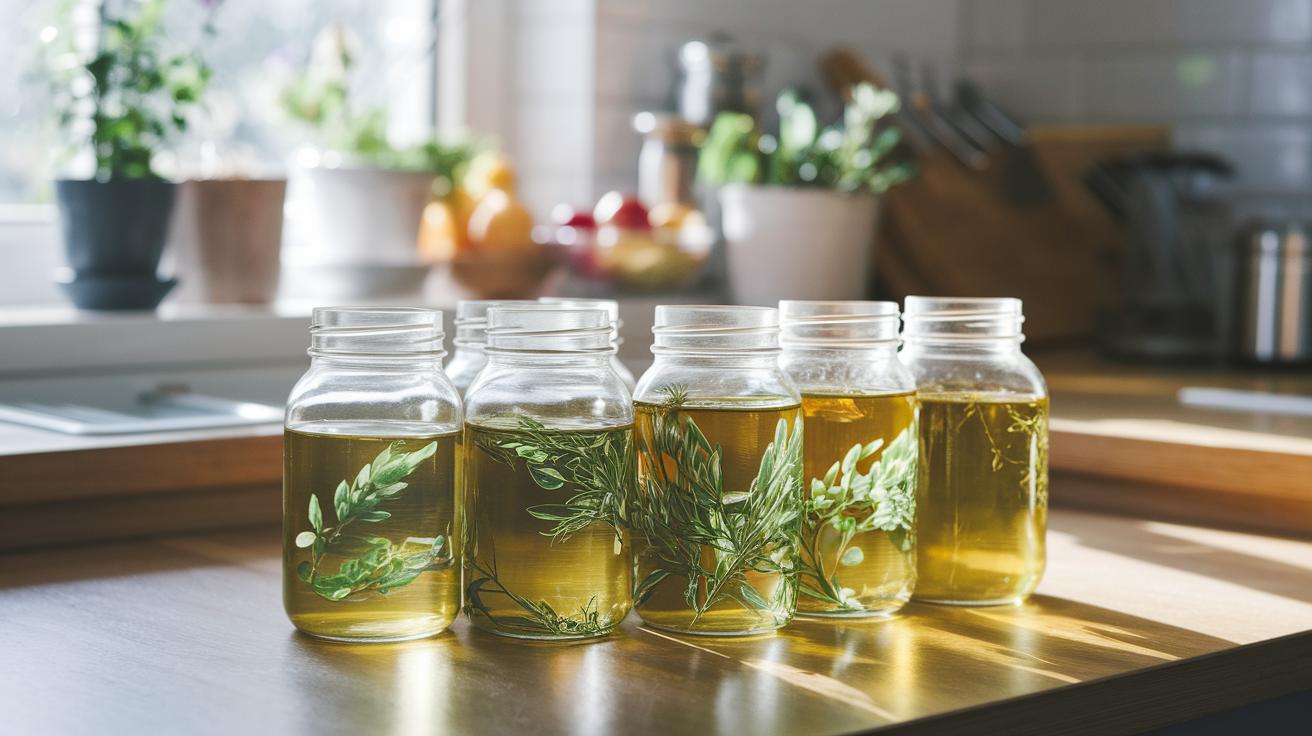
Organic Aromas offers three specialty oils that nurture your skin. Rosehip oil (pressed from rosehip seeds) feels silky and overflows with vitamin A. It helps your body boost collagen. Keep it in the fridge. It stays fresh for about six months.
Sea buckthorn oil (from bright orange berries) carries powerful antioxidants and palmitoleic acid (a fat that helps heal skin). It slips over wounds or sunburns and speeds recovery.
Tamanu oil (pressed from tropical nut kernels) greets you with a warm, nutty aroma. It’s soothing and anti-inflammatory (calms redness), so it quiets irritation.

Join Now and Get a Coupon for 10% Off!
And here’s a fun thought, why not let dried herbs join the party? Infused oils (neutral oils packed with extra plant goodness) are simple to make. Calendula softens dry skin. Chamomile cools irritation. Rosemary awakens circulation. Lavender invites calm.
Three easy ways to infuse your oil, no solvents needed. Just oil, herbs, and either time or gentle energy:
Cold Infusion
- Combine three tablespoons of dried herbs with enough oil to cover them.
- Seal in a jar and place in indirect sunlight.
- Wait 4–6 weeks, shaking the jar daily.
- Strain and bottle the oil for later use.
Heat Infusion
- Mix herbs and oil in a glass bowl.
- Warm at 100–120°F for 2–4 hours, stirring now and then.
- Let cool.
- Strain and store in a cool, dark spot.
Ultrasound Infusion
- Put herbs and oil in a clean jar.
- Immerse the jar in an ultrasonic cleaner for 30–60 minutes.
- Filter out the herbs. You’ll have a clear, potent oil.
Each of these oils is 100% organic and ethically sourced. Always check our safety guide for proper dilution. Then sit back, inhale the gentle aroma, and enjoy your skin’s happy glow.
Final Words
Diving into carrier oils shows how nut, seed and vegetable bases help spread essential oil goodness without skin irritation. We compared jojoba, almond, coconut and more. Then we laid out simple steps for picking, storing and mixing oils safely.
Feel free to try cold and heat infusion methods at home. Pay attention to dilution ratios and patch tests. You’ve got a solid guide to blend your own spa moments.
Here’s to calm afternoons and bright mornings using the right types of carrier oils for essential oils!
FAQ
What types of carrier oils are available and what benefits do they offer?
The types of carrier oils include jojoba, sweet almond, fractionated coconut, grapeseed, olive, argan and avocado oils. They moisturize, nourish, absorb quickly and balance skin health.
What is the best carrier oil to mix with essential oils for skin?
The best carrier oil to mix with essential oils for skin is jojoba oil. Jojoba matches skin sebum, reduces irritation, absorbs quickly and supports lasting moisture.
What is the best carrier oil to mix with essential oils for a diffuser?
The best carrier oil for diffuser blends is fractionated coconut oil. It stays liquid at room temperature, has no scent and lets essential aromas fill your space without greasiness.
What are the top 10 carrier oils?
The top 10 carrier oils are jojoba, sweet almond, fractionated coconut, grapeseed, olive, argan, avocado, rosehip, tamanu and evening primrose oils. They each carry nutrients and boost essential blends.
What is the 30/50/20 rule for essential oils?
The 30/50/20 rule for essential oils refers to fragrance blending ratios: 30% top-note oils, 50% middle-note oils and 20% base-note oils for balanced aroma layers.





